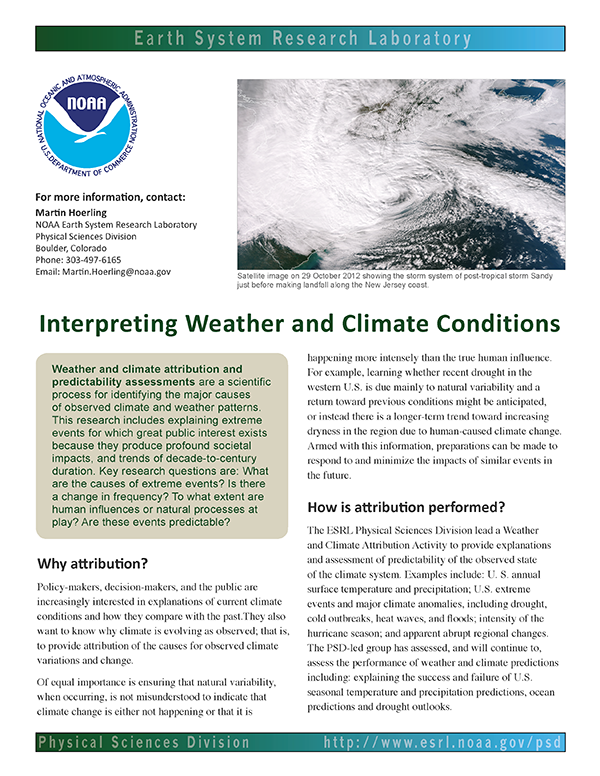What is Attribution?
Climate attribution is a scientific process for establishing the principal causes or physical explanation for observed climate conditions and phenomena. This includes attribution of the causes for observed climate variations that may not be unusual in a statistical sense but for which great public interest exists because they produce profound societal impacts.
Attribution is most frequently associated with the process of explaining a detected change. In particular, attribution of anthropogenic climate change—the focus of the IPCC reports—has the specific objective of explaining a detected climate change that is significantly different from that which could be expected from natural external forcing or internal variations of the climate system. According to the Third Assessment Report (TAR), the attribution requirements for a detected change are (1) a demonstrated consistency with a combination of anthropogenic and natural external forcings, and (2) an inconsistency with "alternative, physically plausible explanations of recent climate change that exclude important elements of the given combination of forcings."
There are numerous mechanisms that may produce climate variations or change. One is external forcing, which contains both natural and anthropogenic sources. Examples of natural external forcing include solar variability and volcanic eruptions. Examples of anthropogenic forcing are from changing concentrations of greenhouse gases and aerosols, and land cover use produced by human activities. A second involves internal mechanisms within the climate system that alone can produce climate variations. Internal mechanisms include processes that are due primarily to interactions within the atmosphere as well as those that involve coupling of the atmosphere with various components of the climate system. Climate variability due to purely internal mechanisms is often called internal variability.
For attribution to be established, the relationship between the observed climate state and the proposed causal mechanism needs to be demonstrated, and alternative explanations need to be determined as unlikely. In the case of attributing the cause of a climate condition to internal variations, for example, due to Elño-related tropical east Pacific sea surface conditions, the influence of alternative modes of internal climate variability also must be assessed. Before attributing a climate condition to anthropogenic forcing, it is important to determine that the climate condition was unlikely to have resulted from natural external forcing or internal variations alone.
